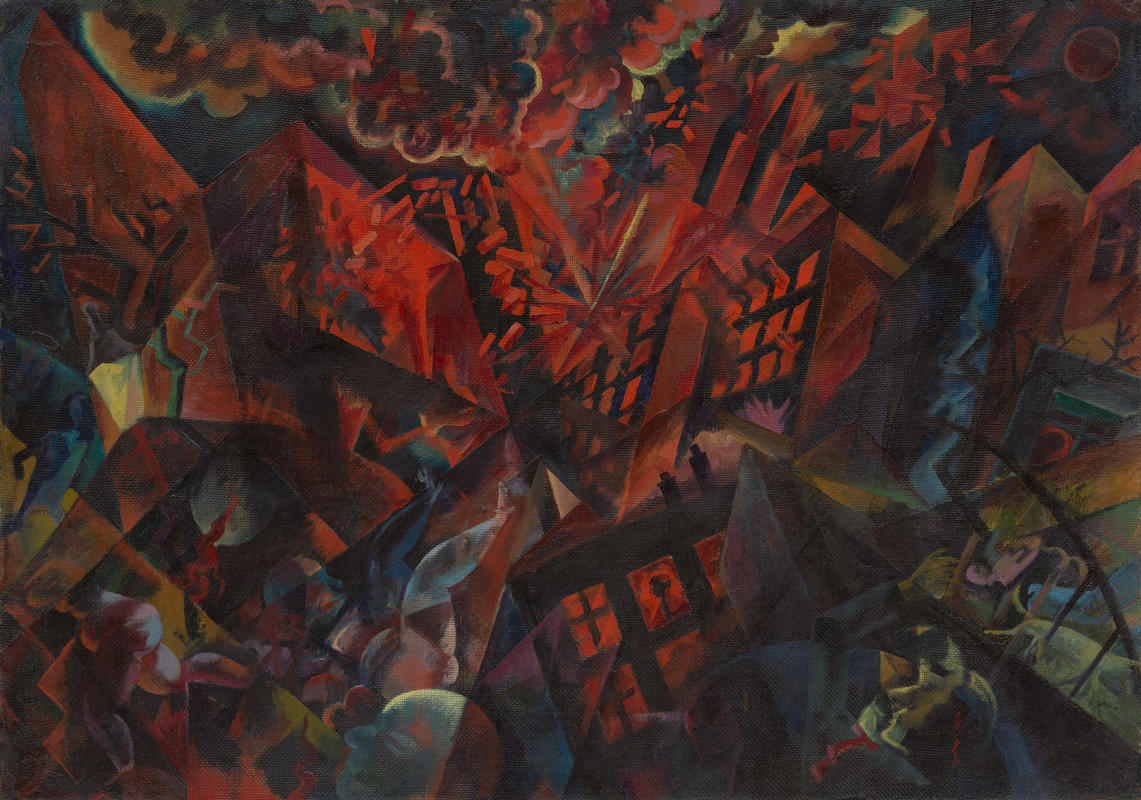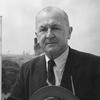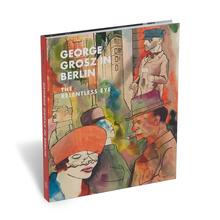More about Explosion
- All
- Info
- Shop

Contributor
George Grosz's Explosion is an expression of the unthinkable tragedy of the first World War, and the permanent psychological, emotional and spiritual tax it collected from Grosz, and millions of others.
It shows the direct influence of his friend Otto Dix, who joined the German military as a way of expressing his pride in his nation and his self-sacrificing masculine energy. Unlike Dix, Grosz was against the war from the beginning, but he opted to join anyway in November 1914, figuring that volunteering would give him the opportunity to choose his unit. By May of the following year, the top brass labeled Grosz "permanently unfit for service." Some sources say the official reason was sinusitis, for which he received an operation, but Grosz was also suffering from psychiatric issues and spent time in a sanatorium, which has been mentioned by others as the cause of his discharge. His mental instability would subside only under the influence of gallons of alcohol throughout the rest of his life, according to his sons.
Historians are still debating as to what caught the cat's tail and started the war in the first place. Certainly, it began with assassins in Sarajevo, but that doesn't tell the whole story. The most convincing explanation, as odd and unscholarly as it may seem, is that a bunch of young men were desperate to prove that they were men. It's not easy to be a young man who can't seem to scale the infinite barrier to authentic manhood— they felt, for some reason, the need to throw their bodies into a battlefield. As Grosz wrote, "Of course, there was a kind of mass enthusiasm at the start. But…when everything went to pieces, all that remained, at least for me and most of my friends, was disgust and horror."
By 1916, the artist had started to feel the weight of his German birth name, Georg Ehrenfried Groß. Feeling that the furor of nationalism surging around him was a bunch of hot air, Groß decided to Anglicize his name to serve as a kind of middle finger to the militaristic society that he despised (even though English is a Germanic language). He added an e to his first name and change Groß to Grosz, its phonetic equivalent, and his friend and collaborator Helmut Herzfelde followed suit, becoming John Heartfield. The two men founded a satirical publication, "Malik-Verlag," for the first installation of which Grosz submitted nine lithographs. His work, in sharp contrast, as Fred S. Kleiner points out, to Marsden Hartley's portrayal of the German forces, more closely followed Goya's Caprichos, showing disfigured soldiers, metallic prostheses, a colonel with unbuttoned pants hugging a nurse, a hospital worker pouring human body parts into a pit with a bucket, and, one of his most famous works, his pen-and-ink Fit for Active Service, which shows army doctors approving a male skeleton to proudly serve his nation.
Sources
- Kleiner, Fred S. Gardner's Art through the Ages: The Western Perspective, Volume 2. Boston: Cengage, 2009.
- Lewis, Beth Irwin. George Grosz: Art and Politics in the Weimar Republic. Madison, WI: University of Wisconsin—Madison, 1969.
- Rewald, Sabine. Glitter and Doom: German Portraits from the 1920s. New York: Metropolitan Museum of Art, 2006.
- Walter, Hans-Albert. Deutsche Exilliteratur 1933–1950. Band 1: Die Vorgeschichte des Exils und seine erste Phase. Stuttgart: Weimar, 2003.












